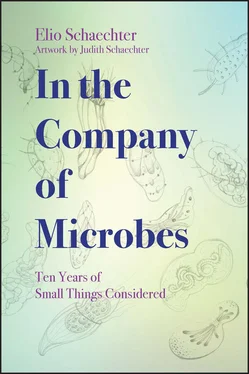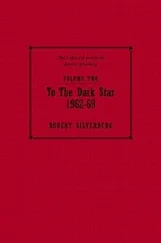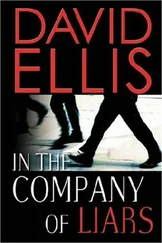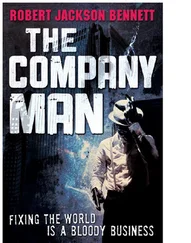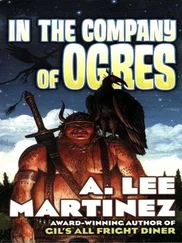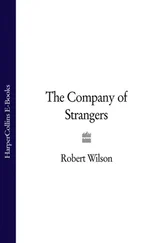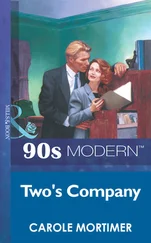12 Part 7: Teaching Things65 On Teaching Stanley Falkow 66 Hello Again, Metabolism! Amy Cheng Vollmer 67 Why Medical Microbiology Is Not Like Stamp Collecting Elio 68 Where Mathematicians and Biologists Meet Joe Mahaffy 69 Short Courses for Long-Term Learning Phoebe Lostroh 70 Preaching to a Prokaryotic Choir Mark Martin 71 “The Great Plate Count Anomaly” That Is No More Gemma Reguera
13 Talmudic Question #73
14 List of Contributors to Small Things Considered
Guide Cover
Contents 1 Of Ancient Curses, Microbes, and the ASM
i ii iii iv v vi vii viii ix x xi xii xiii xiv xv xvi 1 3 4 5 6 7 8 9 10 11 12 13 14 15 16 17 18 19 20 21 22 23 24 25 26 27 2829 30 31 32 33 34 35 36 37 38 39 40 41 42 43 44 45 46 47 48 49 50 51 52 53 54 55 56 57 59 60616263646566676869707172737475767778798081828384858687888990919293949596979899100101102103104105106107108109110111112113114115116117118119120121123124125126127128129130131132133134135136137138139140141142143144145146147148149150151152153154155156157159160161162163164165166167168169170171172173174175176177178179180181182183184185186187188189190191192193195196197198199200201202203205206207208209210211212213214215216217218219220221222223224225226227228229230231232233234235236237238239240241242243244245246247248249250251252253254255256257258259260261262263264265267268269270271272273274275276277278279280281282283284285286287288289290291292
Contributors
Bonnie L. BasslerPrinceton University, Princeton, NJ
John CoffinTufts University, Medford, MA
Chris CondayanAmerican Society for Microbiology, Washington, DC
Julian DaviesUniversity of British Columbia, Vancouver, BC, Canada
Tim DonohueUniversity of Wisconsin, Madison, WI
Stanley FalkowStanford University School of Medicine, Stanford, CA
Peter GeoghanAmerican Society for Microbiology, Washington, DC
Daniel P. HaeusserCanisius College, Buffalo, NY
Franklin M. HaroldUniversity of Washington Health Sciences Center, Seattle, WA
Jaimie HenzyBoston College, Chestnut Hill, MA
Welkin JohnsonBoston College, Chestnut Hill, MA
Suckjoon JunUniversity of California, San Diego, La Jolla, CA
Patrick KeelingUniversity of British Columbia, Vancouver, BC, Canada
Richard LosickHarvard University, Cambridge, MA
Phoebe LostrohColorado College, Colorado Springs, CO
Mark LyteSchool of Pharmacy, Texas Tech University Health Sciences Center, Amarillo, TX
Joe MahaffySan Diego State University, San Diego, CA
Mark MartinUniversity of Puget Sound, Tacoma, WA
Jeff F. MillerUniversity of California, Los Angeles, Los Angeles, CA
Nanne NanningaSwammerdam Institute for Life Sciences, University of Amsterdam, The Netherlands
Fred NeidhardtUniversity of Michigan Medical School, Ann Arbor, MI
Maureen O’MalleyUniversity of Sydney, New South Wales, Australia
Mercé PiquerasFreelance science writer and science editor, Barcelona, Spain
Vincent RacanielloColumbia University, New York, NY
Shmuel RazinHebrew University-Hadassah Medical School, Jerusalem, Israel
Gemma RegueraMichigan State University, East Lansing, MI
Elio SchaechterUniversity of California, San Diego, La Jolla, CA, and San Diego State University, San Diego, CA
Claudio SchazzocchioImperial College London, London, England
Jan SpitzerMallard Creek Polymers, Charlotte, NC
William C. SummersYale University School of Medicine, New Haven, CT
Amy Cheng VollmerSwarthmore College, Swarthmore, PA
Christoph WeigelHochschule für Technik und Wirtschaft, Berlin
Conrad WoldringhSwammerdam Institute for Life Sciences, University of Amsterdam, The Netherlands
Charles YanofskyStanford University, Stanford, CA
Introduction
Sometime early during 2006, ASM staff members and I began discussing ways to expand the society’s communications efforts into a new area. We wanted to take better advantage of available electronic means for reaching ASM members and interested members of the public with information about microbiology. One opportunity was for ASM to launch a blog. However, blogging raised eyebrows in some circles, including the attorneys who are asked to review proposed programs of this sort. Being good lawyers, they mentioned liability issues, worrying that such an informal vehicle for communicating might prove too free-wheeling if not handled properly. Without a candidate blogger in mind, we pondered where to go next.
Meanwhile, Elio Schaechter contacted me out of the blue, saying that, in retirement, he was seeking a new project and wondered whether ASM might be interested in supporting a blog on microbiology. Instantly, our concerns over blogging liabilities vanished. Here was an eminent microbiologist and former president of ASM who was respected across the broad community of microbiologists. Don’t worry, he assured us, the nooks and crannies of microbiology can provide plenty of rich material for the blog and, while it might touch on controversy, any forthcoming debates will be strictly Talmudic—(The Talmud is a combination of texts explaining the meaning of events or practices appearing in the old Testament)—not damaging to any institution or person, apart perhaps from those with especially fragile egos.
By then ASM had begun producing podcasts, and the blog that Elio conceived of doing fell under that umbrella—or, rather, onto that platform. Elio was introduced to Chris Condayan, a public communications manager at ASM, who says that Schaechter quickly proved to be a “sharp tech,” meaning he soon mastered the virtual mechanics as well as the art of the blogging process. From the outset, Elio issued blog posts regularly, typically posting two items each week. He also very much molded its content, mining gems excavated from the broad expanse of the microbiological sciences.
To begin with, Small Things Considered was purely Elio’s output, but eventually he attracted other writers and microbiologists to join him in this novel communications enterprise. The first additional steady contributor was Merry Youle, a technical writer, who approached him as an interested reader. For several years she helped to edit the postings before she began to write some of them herself. Later, several microbiologists were brought on board to broaden the scope of the blog postings but also to give Elio some hands-on help.
There was a flurry of interest after the first few postings during the second half of 2006, which subsided for a while before it gradually but steadily began building into a huge success. Over the past decade, Elio and his band of bloggers posted more than 1,000 items on Small Things Considered , and those postings by now have attracted more than 2 million page views at an average of more than 600 views per day, and elicited more than 2,300 comments. Along with traditional postings, the blog now includes a Teachers Corner that caters to classroom needs. Among microbiologists, the blog is well known and much liked, but it also attracts plenty of readers outside the discipline. Further, it is so well respected that the Library of Congress has identified Small Things Considered as one of the first blogs in the sciences worth archiving.
Читать дальше
